
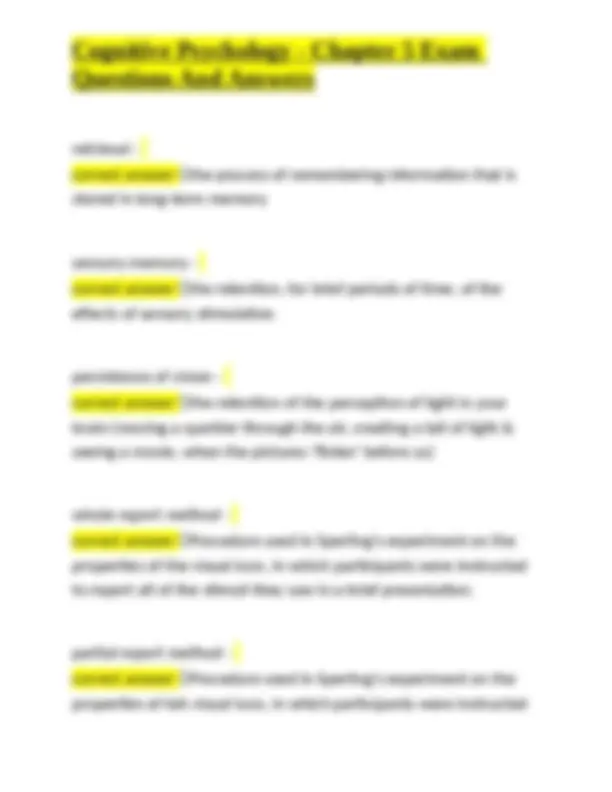
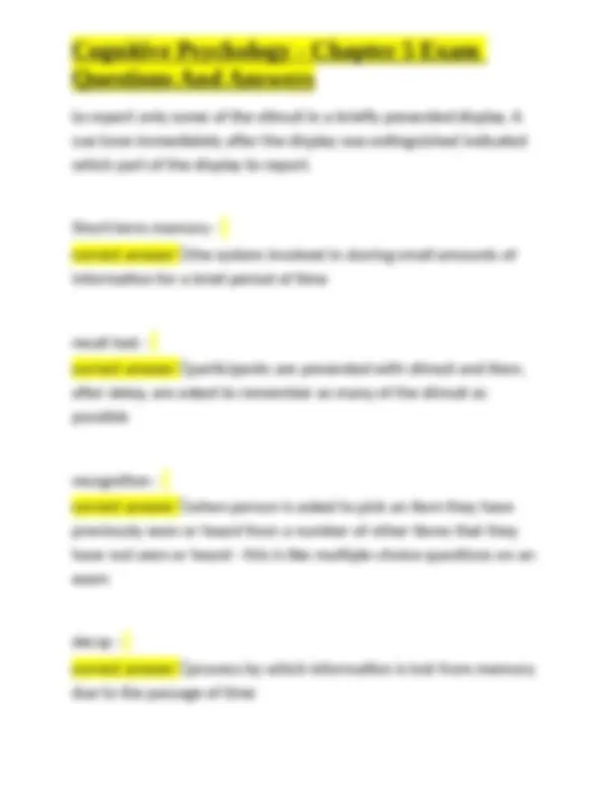
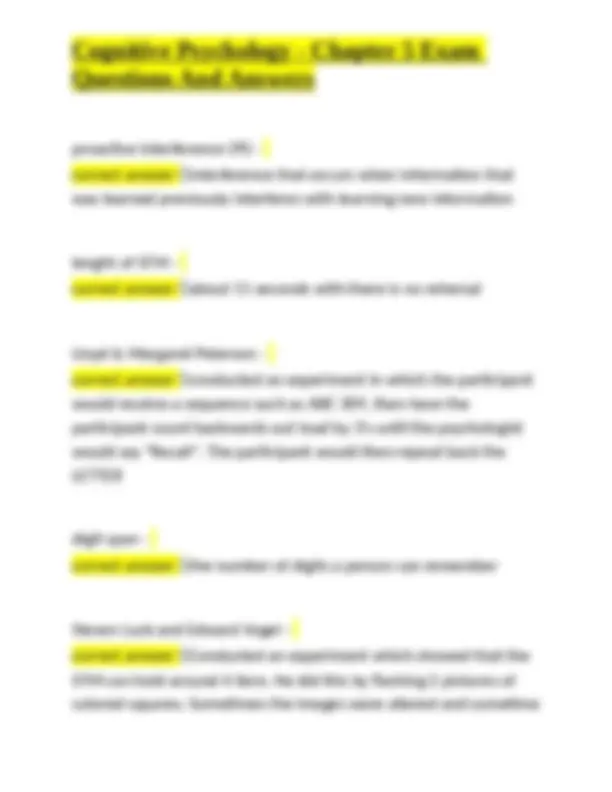
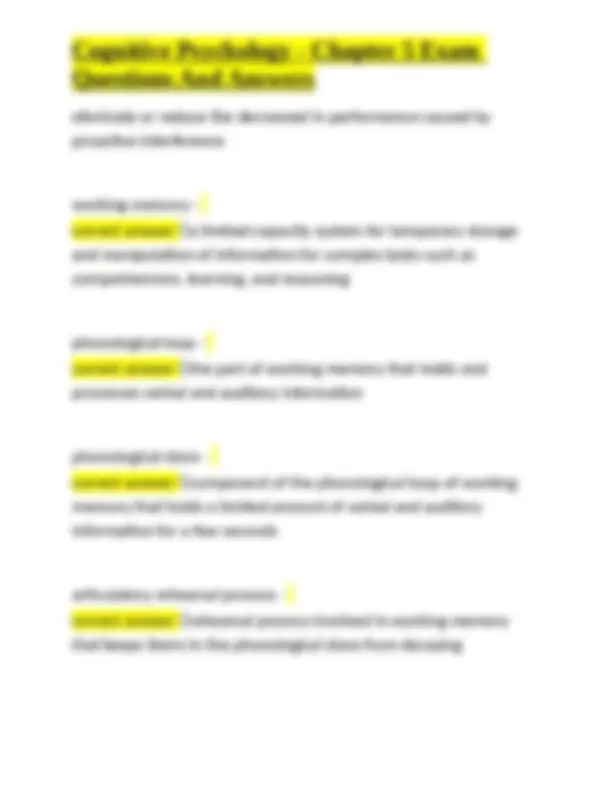
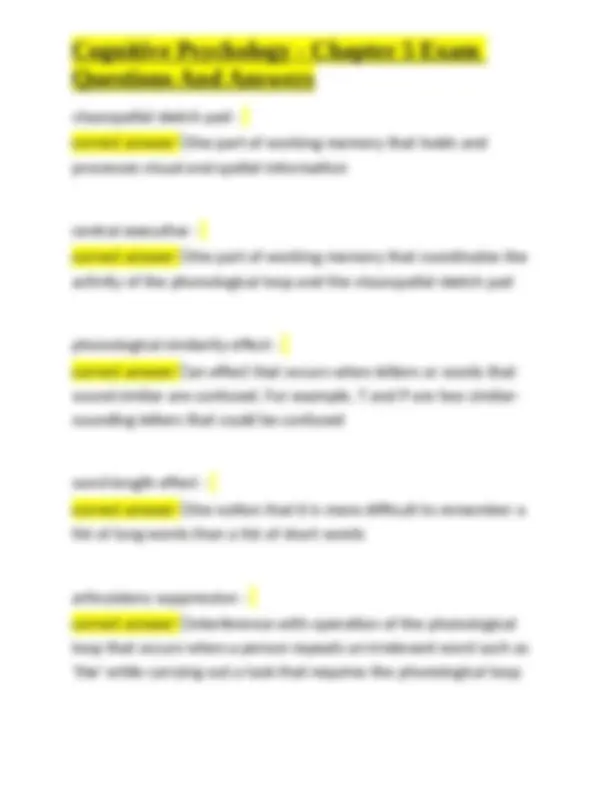
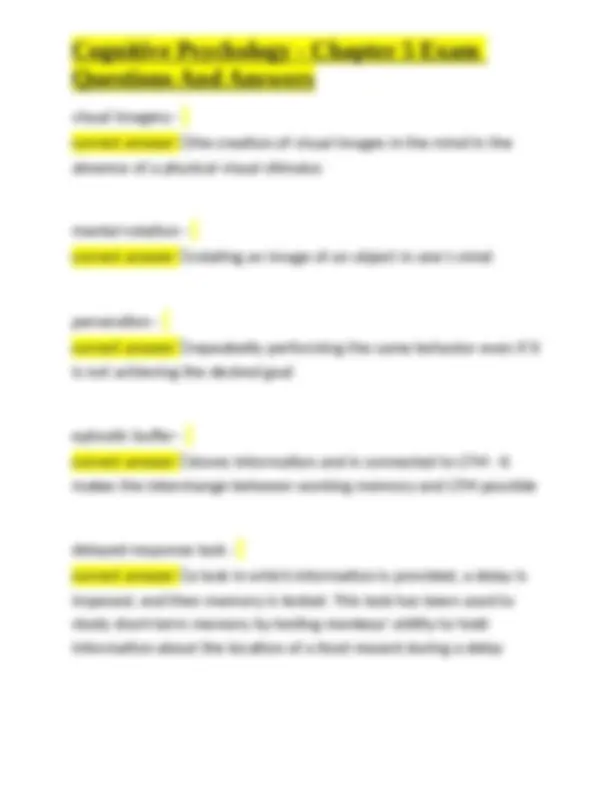


Study with the several resources on Docsity

Earn points by helping other students or get them with a premium plan


Prepare for your exams
Study with the several resources on Docsity

Earn points to download
Earn points by helping other students or get them with a premium plan
Community
Ask the community for help and clear up your study doubts
Discover the best universities in your country according to Docsity users
Free resources
Download our free guides on studying techniques, anxiety management strategies, and thesis advice from Docsity tutors
Cognitive Psychology - Chapter 5 Exam Questions And Answers
Typology: Exams
1 / 10

This page cannot be seen from the preview
Don't miss anything!







memory - correct answer ✅the processes involved in retaining, retrieving, and using information about stimuli, images, events, ideas, and skills after the original information is no longer present clive wearing - correct answer ✅at age 40, he contracted viral encephalitis, which destroyed parts of his temple lobe that are important for forming new memories. He lives within the most recent one or two minutes of his life. Donald Broadbent - correct answer ✅created a model that proposes a series of processing stages to explain how people can selectively attend to one message out of many modal model of memory - correct answer ✅a model that includes many of the features of memory models that were being proposed in the 1960s
structural features - correct answer ✅the stages of the 'Modal Model of Memory' model:
to report only some of the stimuli in a briefly presented display. A cue tone immediately after the display was extinguished indicated which part of the display to report. Short-term memory - correct answer ✅the system involved in storing small amounts of information for a brief period of time recall test - correct answer ✅participants are presented with stimuli and then, after delay, are asked to remember as many of the stimuli as possible recognition - correct answer ✅when person is asked to pick an item they have previously seen or heard from a number of other items that they have not seen or heard - this is like multiple-choice questions on an exam decay - correct answer ✅process by which information is lost from memory due to the passage of time
proactive interference (PI) - correct answer ✅interference that occurs when information that was learned previously interferes with learning new information lenght of STM - correct answer ✅about 15 seconds with there is no rehersal Lloyd & Margaret Peterson - correct answer ✅conducted an experiment in which the participant would receive a sequence such as ABC 309, then have the participant count backwards out loud by 3's until the psychologist would say "Recall". The participant would then repeat back the LETTER digit span - correct answer ✅the number of digits a person can remember Steven Luck and Edward Vogel - correct answer ✅Conducted an experiment which showed that the STM can hold around 4 item. He did this by flashing 2 pictures of colored squares. Sometimes the images were altered and sometime
physiological approach to coding - correct answer ✅determining how a stimulus or experience is represented by the firing of neurons mental approach to coding - correct answer ✅determining how a stimulus or experience is represented in the mind auditory coding - correct answer ✅involves representing items in STM based on their sound visual coding - correct answer ✅involves representing items visually - remembering the details of a floor plan or layout of streets on a map semantic coding - correct answer ✅representing items in terms of their meaning release from proactive interface - correct answer ✅a situation in which conditions occur that
eliminate or reduce the decreased in performance caused by proactive interference working memory - correct answer ✅a limited-capacity system for temporary storage and manipulation of information for complex tasks such as comprehension, learning, and reasoning phonological loop - correct answer ✅the part of working memory that holds and processes verbal and auditory information phonological store - correct answer ✅component of the phonological loop of working memory that holds a limited amount of verbal and auditory information for a few seconds articulatory rehearsal process - correct answer ✅rehearsal process involved in working memory that keeps items in the phonological store from decaying
visual imagery - correct answer ✅the creation of visual images in the mind in the absence of a physical visual stimulus mental rotation - correct answer ✅rotating an image of an object in one's mind perseration - correct answer ✅repeatedly performing the same behavior even if it is not achieving the desired goal episodic buffer - correct answer ✅stores information and is connected to LTM - it makes the interchange between working memory and LTM possible delayed-response task - correct answer ✅a task in which information is provided, a delay is imposed, and then memory is tested. This task has been used to study short-term memory by testing monkeys' ability to hold information about the location of a food reward during a delay